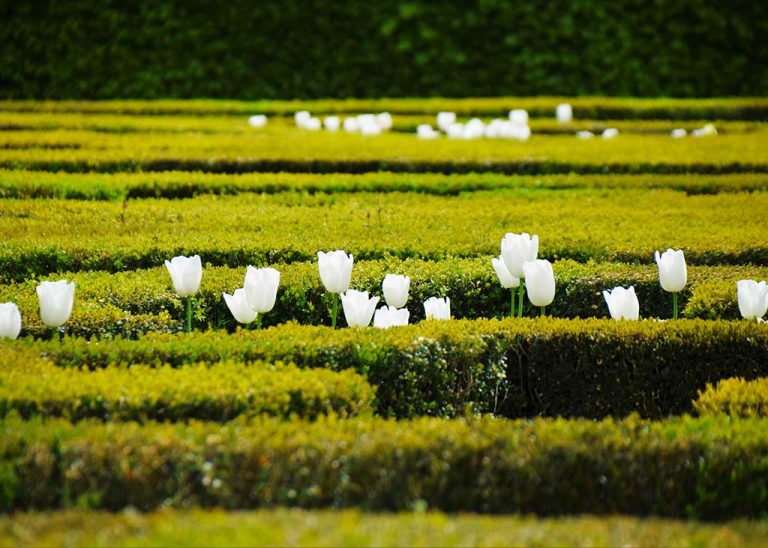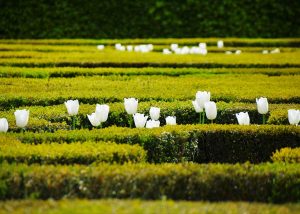The gardens of Villandry are restored to their Renaissance glory
The acquisition of the estate by Joachim Carvallo marked a return to their roots for the gardens of Villandry. Already known for their beauty in the Renaissance, different owners successively transformed them, now into a formal garden, now a romantic garden. With a scientist’s meticulousness, Carvallo recreated gardens that were worthy of the restored chateau.

Joachim Carvallo's project for the gardens
Joachim Carvallo’s project for the gardens of Villandry shows the synthesis of several garden styles: medieval garden, Renaissance garden, French garden.
Gardens changed drastically over time
Ever since the construction of the Chateau of Villandry in 1532, outstanding gardens have embellished the building. The passage of time and changing fashions meant they underwent drastic changes in appearance. Archeological findings tell us how, in the Renaissance, there was a decorative kitchen garden at close proximity to the chateau.
In the 18th century, the grounds were enlarged and enriched with a formal garden, then an ornamental lake in the shape of a Louis XV mirror.
When Joachim CARVALLO visited Villandry in 1906, he found:
« The grounds [est][are] landscaped in the English style, all undulations and hillocks (…), planted with a good many recently imported exotic species – cedars, pines, thujas, magnolias – set in clumps on the slopes of artificial mounds. The chateau itself [disparaît]in a forest of trees and greenery. »
Joachim Carvallo
A scientific recreation
The romantic English garden was not to Carvallo’s taste and, between 1908 and 1918, he devoted himself to recreating the Renaissance gardens. Why? Because he felt that the Renaissance chateau, which he had just finished restoring to its former glory, ought to have fitting gardens.
As a man of science, he used a scientific approach to assemble a series of archeological and literary clues. By comparing the remains of walls and pipes against old plans, such as those of the Marquis de Castellane and the Napoleonic land register, Carvallo was able to recreate the decorative kitchen garden, while works like Les Plus Excellents bâtiments de France or the Monasticon Gallicanum gave him an idea of Renaissance landscaping.
To recreate the ornamental salons on their original terraces, he called on the painter Lozano and Spanish artist and landscape architect Javier de Winthuysen to design the salon of the crosses and the salon of love. The salon of music was designed by Joachim himself.
For the ‘classical’ water garden, typical of the 18th century, he used the Marquis of Castellane’s plans, preserved in the Napoleonic land register.
Far from being a mere replica of gardens reproduced in architectural treatises, the gardens of Villandry are a reinvention. From their layout to the choice of vegetables, everything was conceived in terms of a return to the origins of the Renaissance formal garden.




Constantly evolving gardens
True to Joachim Carvallo, his descendants have undertaken to preserve and develop the Villandry estate with the rigour and selflessness that are the making of outstanding gardens. The herb garden is a 1970s creation; the sun garden, based on a design by Joachim, was inaugurated in 2008, as a beautiful way to mark the centenary of the recreation of these exceptional gardens.
Firmly rooted in their time, the gardens of Villandry made the decisive move to organic in 2009. Since then, in particular in the kitchen garden, working methods have been based on integrated management, along the lines of “observe to prevent, prevent to avoid the use of pesticides”.
You may also be interested in these contents
Bibliography
- Robert & Henri CARVALLO, Le Château de Villandry, Editions Plume (1998)
- Cédric MICHON, "Conseils et conseillers sous François Ier", Les conseillers de François Ier Rennes, Presses universitaires de Rennes, 2011















